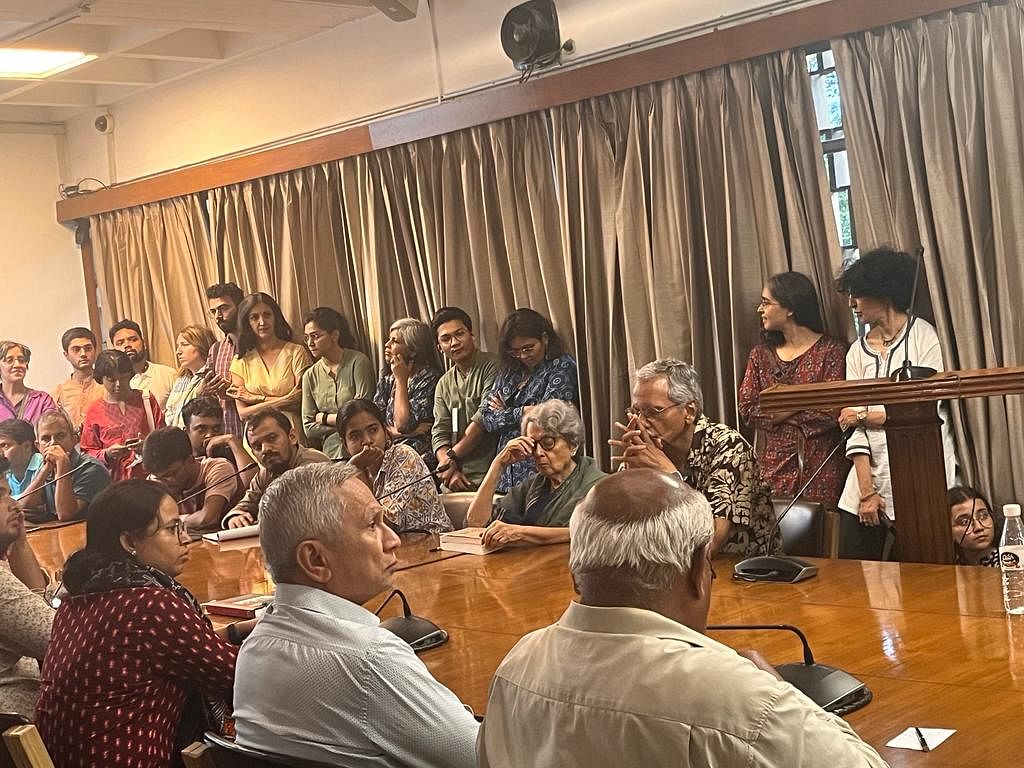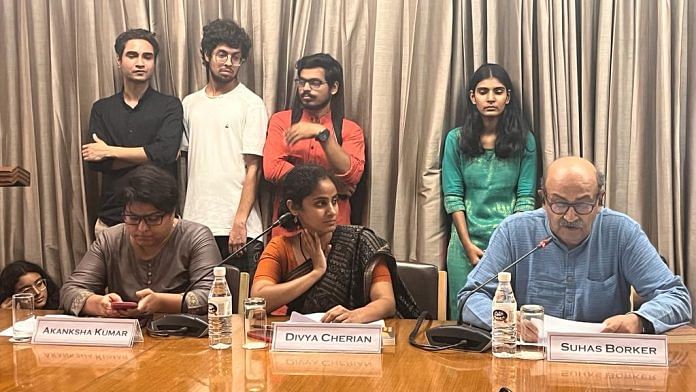New Delhi: A number of Indians are consumed by one question today: What does it mean to be a Hindu?
There are multiple answers, as there should be for any question about identity. Shashi Tharoor to Swapan Dasgupta to Bibek Debroy to Pawan Verma to Karan Singh have all weighed in.
A new book by Divya Cherian, a Princeton assistant professor and history scholar, called Merchants of Virtue: Hindus, Muslims, Untouchables in Eighteenth-Century South Asia, goes back in time and poses this question to the 18th-century Rajasthani society. One answer, found deep in the Bikaner archives was this: being Hindu wasn’t a norm crafted by the dominant Brahmins or Rajputs, as one would presume. It was fashioned by the ascendant class of merchants, buoyed by the regional and global trade and new wealth of that century — before colonial rule took root, says the book.
The Krishna-worshipping mercantile class of that era led the project of defining what it meant to be a Hindu by positioning themselves not against the ‘Muslim other’ but against a group of people once called the ‘untouchables’. This group was predominantly made up of artisanal workers, landmass vagrants and human waste cleaners. And it also included Muslims.
The Vaishnavs and Jains laid down strict social and legal codes that became markers of an exclusive, elite Hindu identity — based on vegetarianism, purity, austerity and chastity.
The mercantile class has largely been studied from the economic aspect, but rarely as agents of social and legal change in the pre-colonial period, or what Cherian calls India’s ‘early modern’ period. A new, hopeful era of global economic activity was unleashed around this time.
“A key aspect of the early modern period is the circulation of finances, capital, goods, people, germs and animals around the world. One group that benefited immensely from these early modern financial flows are the merchants,” said Cherian at a book launch talk titled ‘Caste Before Colonialism’ in New Delhi’s India International Centre.
“In the 18th century, it is the merchants of Marwar who gathered a lion’s share of that increase in inflow of silver into north India and also the influence that comes with that.”

With their newfound wealth and power, they set about drawing the contours of what it means to be Hindu and non-Hindu.
“And that led to a hardening of caste order. It was caste difference and exclusion that was crucial to the self-definition of the Hindu community. This led to a reworking of the Hindu as a category as an exclusive elite class,” she added.
Contemporary opinion-makers have often broad-brushed that era unthinkingly as one defined by a Hindu-Muslim binary. Cherian said it was caste.
Also read: UP Dalits grew in confidence because of BSP. That’s why they are voting for BJP today
Making meat-eating punitive
For too long, the popular understanding of the origins of vegetarianism has been to locate it in the Arya Samaj philosophy. But Cherian’s research found that a sort of essential Hindu-ness was being reimagined as vegetarianism, way before the Samaj.
Vegetarianism came to be associated with the privileged Hindu caste groups in the 18th century, as crafted by the Marwar merchants on the basis of ahimsa, non-harm, philosophy. They led the campaign to root out the killing of animals and meat-eating, she said. They also made meat-eating punitive.
A new legal category was also created by the Marwar merchants, predominantly Jains and Vaishnavites, called ‘achhep’ to denote leather workers, sanitation workers, artisans, and Muslims. And this category of people was mostly punished for their transgressions in water access, meat-eating and rituals. However, when the Mahajans, Brahmins, Rajputs and peasants were charged with injuring or slaughtering animals, they mostly escaped punishment by paying bribes or invoking networks. But the achheps, the tailors, the oil pressers, carpenters, and cloth printers were all punished or fined. The author found many petitions by these groups protesting the fines. She calls these petitions “documents of resistance”.
“As defenders of the defenseless and spokespersons for the voiceless, Vijay Singh (Rajput ruler who was also a Krishna devotee), his merchant bureaucracy and their merchant and brahman social allies earned moral capital,” the book says.
Most central to these efforts was the success of Brahmins and merchants in transforming profit into status, the book says. The Brahmins in Marwar didn’t have the political clout that they did in peninsular India at that time. Their literate status got them jobs as administration officers in the Rathore kingdom, but they only rose when the Vaishnav and Jain merchants worked with them. The new elite structure derived power from capital, not land. In Marwar, they succeeded in ‘replacing ancient regime of bodily vigor grounded in blood and war with a new vision of the elite body — vegetarian, austere and chaste’.
Also read: Ashis Nandy gave a talk on hate regimes. Without saying even a word on Indian politics
Solidifying caste identities
The book’s research busts another truism too.
A popular understanding of the caste system is that it was colonialism that made caste a rigid, inflexible order and that there was plenty of fluidity and freedom of mobility within the varna system before the British arrived. Cherian’s research shows that the Jain and Brahmin officers of the Rathore kingdom laid down strict codes that solidified caste identities on the basis of meat-eating, abortion, chastity, gambling and alcohol.
These moral distinguishers didn’t just stay contained in Marwar.
“The diffusion of Marwari merchants across South Asia later in the 19th century meant that the political strategies and the ethical visions that emerged in the 18th century Marwar were dispersed throughout the subcontinent,” the book says.
Any book on history, Hinduism and caste draws out the largest crowds in the current boom of non-fiction publishing. The small IIC conference room was bursting at its seams with people, mostly students and professors packed like sardines. Many sat on the floor as well. It appeared as if the entire JNU history classroom turned up to hear Cherian, a JNU graduate.
In fact, the very first words Cherian uttered when she introduced her book was something like ‘it all began in JNU’.
(Edited by Theres Sudeep)



